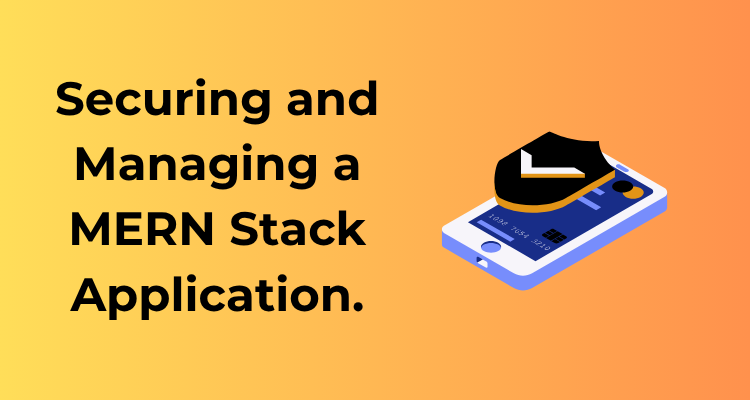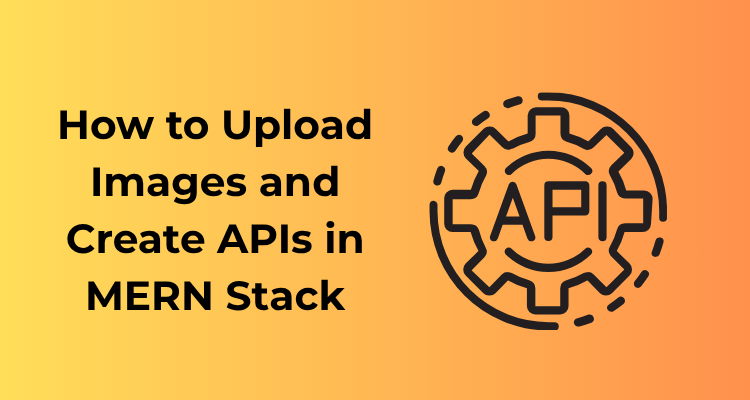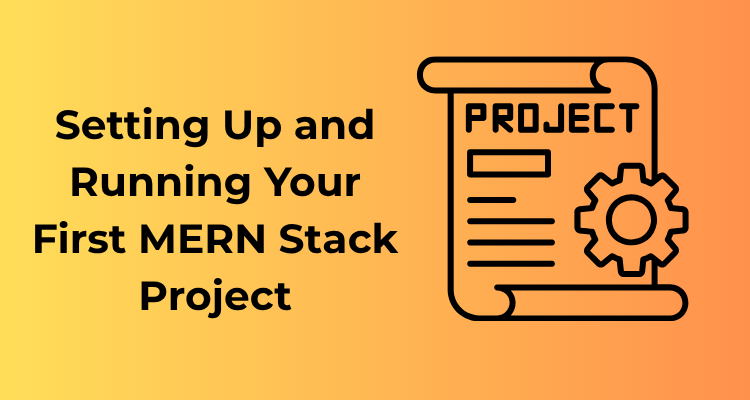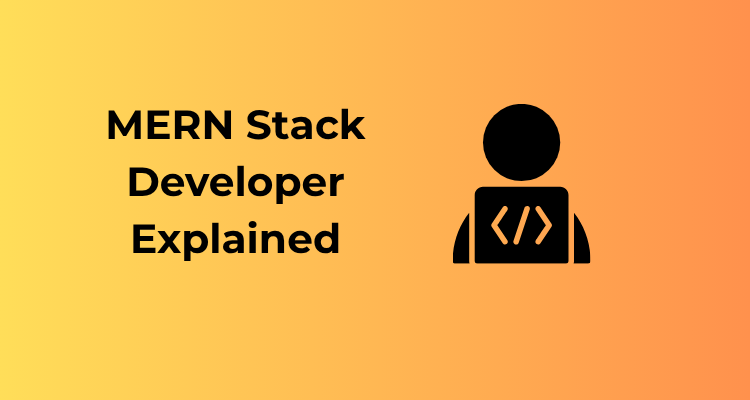Ah, authentication! The cornerstone of any secure application. If you’re building a MERN (MongoDB, Express.js, React, Node.js) stack application, it’s vital to ensure your authentication system isn’t just functional, but also secure enough to withstand modern threats. Let’s explore what crafting a secure authentication system entails and why it matters.
1. Leverage Industry-Standard Authentication Protocols
The first step in securing your application is to opt for proven, industry-standard protocols like OAuth 2.0 or JSON Web Tokens (JWT). JWT is particularly popular in the MERN stack world due to its efficiency in securely exchanging data between the client and server. Ensure every token is signed using a robust secret or a public/private key pair for cryptographic security.
2. Implement Secure Password Management
Passwords are your users’ first line of defense, so handle them with utmost care:
- Hash passwords: Use hashing algorithms like
bcryptto store passwords securely. Never, ever, store plain-text passwords—bad idea! - Enforce strong passwords: Add client-side and server-side validations to ensure users create strong, hard-to-guess passwords.
- Introduce salting: Add salt data to your password hashes to prevent “rainbow table” attacks.
3. Enable Multi-Factor Authentication (MFA)
Multi-factor authentication might feel like overkill for some small-scale apps, but it could be a savior for sensitive applications. You can integrate MFA options like sending one-time passwords (OTPs) via SMS or email, or even better, implement third-party solutions such as Google Authenticator or Authy for added security.
4. Secure Your Sessions with Cookies and Tokens
While working on authentication, session management is equally critical. Here are some tips:
- Secure cookies: Use cookies with attributes like
Secure,HttpOnly, andSameSiteset appropriately to prevent cross-site scripting (XSS) and cross-site request forgery (CSRF) attacks. - Token expiry: Set appropriate expiration times for JWTs or other tokens. This minimizes risks if tokens are leaked.
5. Protect Your Authentication Routes
Always validate input on your login and signup routes to prevent attacks like SQL injection or NoSQL injection. Use a library like express-validator in Node.js to sanitize input efficiently. Also, limit login attempts and implement account lockout policies to block brute-force attacks.
6. Use HTTPS by Default
Don’t let attackers sniff sensitive information traveling over the wire. Always serve your MERN application over HTTPS. Tools like Let’s Encrypt can help you achieve this without breaking the bank.
7. Test Your Authentication System
Hackers are evolving every day, so you need to stay one step ahead. Regularly test your system using security tools like OWASP ZAP or Burp Suite. Simulate attacks on your authentication system to ensure its robustness.

Mastering API Security and Data Validation
When we talk about securing a MERN stack application, one of the first things that come to mind is API security. Given that your APIs are at the heart of your app, they act as a gateway to your data and services. Naturally, this makes them a prime target for malicious actors. But fear not, mastering API security and data validation isn’t rocket science—just good practices done right!
Why API Security is Essential
APIs expose your backend to the public internet. Without proper security measures, you’re essentially leaving the doors to your application wide open. API security ensures only the right people and requests get through, while keeping out bad actors like bots and hackers.
- Prevent API Abuse: Misconfigured APIs can allow attackers to take advantage of your backend. Limiting exposure keeps things safe.
- Maintain Data Integrity: If your APIs are compromised, your data could be used, altered, or deleted maliciously.
- Build User Trust: A secure API framework gives your users confidence, knowing their data is being safeguarded.
Top Tips for Securing Your APIs
You can’t just launch an API and cross your fingers that it remains secure. Here’s how you can proactively secure it:
- Use HTTPS: Always use HTTPS to encrypt data transmissions between the client and server. This ensures sensitive information like passwords or tokens won’t be intercepted.
- Implement Token-Based Authentication: Authenticate requests using secure protocols like JWT (JSON Web Tokens), OAuth, or API keys. JWTs, in particular, are widely used in MERN applications to ensure each request is legitimate.
- Rate Limiting: Prevent Distributed Denial of Service (DDoS) attacks and API abuse by limiting the number of requests clients can make in a given timeframe. Libraries like `express-rate-limit` can help achieve this with ease.
- CORS Configuration: Implement proper Cross-Origin Resource Sharing (CORS) policies. CORS restricts which domains can interact with your API, protecting it from many cross-site scripting attacks.
Data Validation: Your First Line of Defense
Data validation is like your application’s bouncer at the door, ensuring only valid, safe data gets through. Without it, you risk letting malformed or malicious data sneak into your app, potentially wreaking havoc.
Here’s how to make sure data coming into your app is clean and predictable:
- Validate Incoming Data: Using libraries like `Joi` or `Validator.js` in your Node.js backend makes it easier to validate request bodies, query parameters, and other inputs.
- Sanitize Input: Strip harmful characters to prevent injection attacks. `express-validator` is a great tool for this, specifically tailored to Express.js.
- Set Strict Models: On the MongoDB side, use Mongoose schema validations to enforce data integrity at the database level. For example, if an email is required, make sure the schema enforces the correct format.
Be Vigilant—APIs Are Targeted Constantly!
As you grow your MERN stack application, remember that your APIs will only become more attractive targets for attackers. But by prioritizing security and practicing robust data validation regularly, you can confidently thwart most, if not all, threats.
Pro Tip: Always think like an attacker when testing your APIs. If you can find and fix potential vulnerabilities, you’ve already won half the battle!

Optimizing Backend and Database Management with Security Layers
Hey there! Let’s chat about one of the juiciest and most essential components of managing a MERN (MongoDB, Express, React, Node.js) application: the backend and database. This duo holds the core logic and all that priceless user data. That’s why securing and optimizing this part of your application with robust security layers is non-negotiable. Ready? Let’s dive in!
Why Securing the Backend and Database is Crucial
You wouldn’t leave your front door wide open, would you? The backend of your application is essentially the key to everything. If a malicious actor gets in, chaos can ensue—data can be stolen, corrupted, or deleted. It’s critical to layer your defenses here, ensuring that your house (a.k.a., your database) stands strong against unwanted guests.
Layer 1: Protect Your Database Connections
The first thing to take care of is securing your database connection. For MongoDB (the “M” in MERN), always use secure connection strings with your credentials encrypted. For instance:
Environment Variables: Store connection details like `DB_USER` and `DB_PASS` in environment variables. Tools like `.env` files make this manageable.
TLS/SSL Encryption: Ensure the connection between your app and the database uses TLS/SSL. This encrypts communication and prevents man-in-the-middle attacks.
Pro tip: Never, ever hardcode sensitive properties into your source code. Even private Git repositories can accidentally be made public!
Layer 2: Implement Access Control
Think of access control as the velvet rope at a concert. Not everyone gets in! Use proper role-based access control (RBAC) to restrict database access.
– Create specific roles for users depending on their responsibilities (e.g., “admin,” “read-only”).
– Limit database actions—they don’t all need access to `find`, `update`, and `delete`.
MongoDB makes this relatively straightforward with its built-in roles like `read` and `readWrite`. You can even create custom roles tailored to your app’s needs!
Layer 3: Guard the Backend Endpoints
Your backend APIs serve as the middleman between your user-facing app and your server/database. Unprotected endpoints are a welcome mat for malicious requests. Here’s how you secure them:
– **Authentication:** Don’t allow unauthenticated users to access sensitive routes. Use methods like JSON Web Tokens (JWT) or session-based authentication for securing API requests.
– **Rate Limiting:** Install rate-limiting middleware in your Express app to limit the number of requests a user can make in a given time frame. This prevents abuse such as brute-force login attempts.
– **Input Validation:** Always validate user inputs to avoid nasty characters sneaking in. For instance, validate requests with libraries such as `Joi` or `Express-validator`.
Layer 4: Enable Database Security Features
MongoDB offers plenty of native security options—why not use them? Enable features such as:
– IP whitelisting for database access.
– Two-factor authentication (2FA) for database admins.
– Automatic field-level encryption for sensitive data.
These small steps can make a world of difference in reducing potential vulnerabilities.
Layer 5: Keep Your Backend Dependencies Secure & Updated
Did you know that vulnerabilities in npm packages are a common attack vector? Here are tips to stay vigilant:
– Use `npm audit` regularly to spot vulnerabilities.
– Only install trusted, well-maintained packages.
– Handle patch updates quickly. Tools like Dependabot can automate this for you.
Strengthening Frontend Security with React Best Practices
Hey there, React enthusiasts! Whether you are a seasoned developer or just stepping into the fascinating world of MERN stack applications, let’s take a moment to shine the spotlight on frontend security—an area that’s often overlooked but incredibly important. The frontend is the bridge between your users and your application, so fortifying it with the smartest React best practices can make a world of difference.
1. Watch Out for Cross-Site Scripting (XSS) Attacks
Ah, the infamous XSS—it’s like the annoying mosquito you just cannot ignore! React helps immensely by escaping strings by default, but you still need to be diligent when handling user inputs, especially when rendering dynamic content.
- Avoid using `dangerouslySetInnerHTML` unless absolutely necessary: This function bypasses React’s protective measures, leaving you vulnerable to malicious script attacks.
- Sanitize user inputs: Leverage libraries like DOMPurify to clean any untrusted HTML before it’s rendered.
2. Limit Data Exposure with the Right State Management
Ever heard of the saying “your app is only as strong as its weakest link”? One of the common pitfalls in React applications is dealing with overshared data via state or props. Avoid putting sensitive data in your frontend state management systems like `Redux` or `Context` unless it’s absolutely unavoidable.
- Consider retrieving sensitive data on demand from the backend instead of holding it persistently in the frontend.
- Always use secure tokens like JSON Web Tokens (JWT) and validate them at the backend rather than relying solely on client-side verification.
3. Secure Your Third-Party Resources
We all love that extra boost of functionality plugins, libraries, and APIs offer! But guess what? They can open up vulnerabilities if not handled carefully. Here’s how you can stay ahead.
- Audit your dependencies: Tools like npm audit can scan for known vulnerabilities in your project and help you close those doors before attackers find them.
- Stick to trusted sources: Only download packages or tools through official or well-supported repositories like npm or Yarn.
- Use a Content Security Policy (CSP): Configure CSP headers to limit the origin of scripts/style resources loaded by your frontend. This helps mitigate attacks from malicious scripts.
4. Enable Strict Security Headers for Your Application
Did you know the frontend can benefit a ton from HTTP headers too? Use security headers to maximize protection:
- Content Security Policy (CSP): Again, an incredibly vital step to ensure the frontend only loads what’s safe and trusted.
- X-Frame-Options: Use it to prevent your app from being embedded into an iframe on another website—cutting down clickjacking risks.
- X-XSS-Protection: If used wisely, this can detect and sometimes prevent XSS attacks in old browsers.
5. Leverage React’s Tools for Security
React isn’t just a popular JavaScript library for building user interfaces; it also has some built-in features you can harness for security:
- Keep your dependencies updated: The React team regularly pushes security patches and updates, so don’t let laziness leave holes in your defense.
- React strict mode: Enable it to find potential problems in your React application early during development.
Why Regular Auditing Matters
Auditing your code and dependencies isn’t just a task for when you suspect something is wrong; it’s the absolute backbone of a secure and reliable MERN (MongoDB, Express.js, React, Node.js) stack application. If you’re like most developers, you’re constantly installing packages, integrating new libraries, and pushing shiny features live. But here’s the thing — each piece of code, no matter how small or reputable, could carry a hidden vulnerability. That’s why regular audits are essential. Think of them as health checkups for your codebase. Uncovering and addressing potential risks early can save you from sleepless nights down the line.
Where to Start?
Auditing your application might sound intimidating, but it doesn’t have to be. Let’s break it down into approachable steps:
- Keep a close eye on your dependencies: Start by reviewing the packages in your
package.jsonfile. Dependency vulnerabilities are one of the most common attack vectors. Tools like Snyk,npm audit, oryarn auditcan automatically scan your dependency tree for known security issues. - Audit both backend and frontend: While backend vulnerabilities often grab the spotlight, don’t forget about your React frontend. Libraries like React, if improperly configured, can expose you to cross-site scripting (XSS) attacks or other misconfigurations.
Using Automated Tools for Code Vulnerability Checks
We live in the age of automation, so why not let tools do as much heavy lifting as possible? Including automated vulnerability scanning tools in your development pipeline is a big win:
- Static Code Analysis: Tools like ESLint or Prettier not only ensure clean, readable code but can catch potential errors lurking in your syntax.
- Automated Vulnerability Scans: Tools like SonarQube and Dependabot continuously scan for vulnerabilities and outdated dependencies that could compromise your app.
Best Practices for Dependency Management
Managing dependencies well can feel like herding cats—somewhat chaotic but ultimately rewarding. Here are some golden rules to live by:
- Update Regularly: Keep your dependencies up to date to benefit from security patches and performance improvements. Don’t let them collect dust!
- Favor Trusted Sources: Be cautious when adding new libraries. Check the community, GitHub issues, and developer activity.
- Lock Versions: Use a package-lock file (
package-lock.jsonoryarn.lock) to lock specific versions of dependencies and avoid unintentional updates.
Manual Code Reviews: Oldie but Goodie
Even in an era of top-notch automated tools, nothing beats a good old-fashioned manual code review. Bring in a colleague or team member to review your code. Fresh eyes can uncover logic errors, insecure patterns, or even just unoptimized approaches that you might overlook.
Deploying MERN Applications with Secure Practices
Hey there! So you’re stepping into the world of deploying your MERN (MongoDB, Express.js, React, Node.js) stack application? Awesome choice! But wait – before hitting the deploy button, let’s chat about some secure deployment practices you need to nail down. Whether you’re deploying to the cloud, a private server, or using containers, keeping your app secure should be at the top of your priority list. Let’s break this down into digestible steps so you can confidently go live without exposing your app to unnecessary risks.
1. Choose the Right Hosting Environment
Picking the right hosting platform sets the stage for a secure deployment. Popular choices like AWS, Heroku, Google Cloud, and Azure offer plenty of built-in security measures. Look for features like firewalls, automated backups, and encryption. Many of these platforms also support seamless CI/CD pipelines and container orchestration tools like Docker and Kubernetes, which help you keep everything organized and secure.
2. Use HTTPS for Communication
One of the easiest ways to upgrade your app’s security is by using HTTPS. HTTP traffic is unencrypted, leaving your application vulnerable to attackers sniffing sensitive information as it travels across the internet. Obtain an SSL certificate (services like Let’s Encrypt make this free and easy!) and configure your hosting environment to enforce HTTPS-only connections. This step also boosts user trust – nothing says “safe app” like a padlock in the browser address bar!
3. Environment Variables Are Your Best Friend
Keep sensitive data like API keys, database credentials, and secret tokens out of your codebase. Hard-coding these values is a big no-no! Instead, use environment variables to store such secrets securely. Tools like dotenv can help you manage this locally, while cloud platforms often have built-in options for securely storing sensitive variables.
4. Leverage Secure Deployment Pipelines
Automated deployment pipelines not only make your life easier but also reduce human error – bonus points for that! Set up CI/CD workflows with tools like GitHub Actions, Jenkins, or GitLab CI/CD. Ensure your pipelines include automated tests to catch vulnerabilities early. Oh, and always require manual approval for pushing code to production.
5. Restrict Server and Database Access
Lock down who (and what) can access your servers and databases. Set up strong rules for SSH access to your servers – disable root login, use SSH keys instead of passwords, and enforce two-factor authentication (2FA) if possible. For databases like MongoDB, employ IP whitelisting and role-based access control (RBAC) to limit access only to trusted sources.
6. Monitor Your App Post-Deployment
Your security responsibilities don’t end after deployment. Regular monitoring is key to detecting and responding to threats in real-time. Consider tools such as PM2 (for Node.js), New Relic, or even your hosting platform’s native monitoring tools to track app performance, unusual traffic spikes, and security events.
7. Keep It Updated
Ah yes, updates – the sometimes annoying but totally necessary process of improving your security posture. Keep your dependencies, servers, and databases updated with the latest security patches. Enabling automated updates where feasible can help here. Staying one step ahead of potential vulnerabilities is always worth the time!
8. Backup, Backup, Backup!
Accidents and attacks happen, and sometimes the best defense is simply having a reliable recovery plan. Schedule regular backups for your databases and files. Make sure these backups are stored securely – encrypted both in transit and at rest – and test your recovery process periodically to ensure it actually works.
Monitoring and Logging for Real-Time Threat Detection
Alright, let’s dive into something that often gets overlooked but is absolutely critical: Monitoring and Logging. Imagine you’re responsible for guarding a treasure chest (your MERN application). Wouldn’t you want regular updates on who approaches it, who tries to break in, and just what’s happening around it at all times? Absolutely, right? That’s what monitoring and logging do for your application’s security.
Why Is Monitoring So Important?
Your application isn’t a static piece of art. It’s constantly interacting with users, databases, APIs, and much more. Anything could go wrong: brute force attacks, unauthorized access, misused endpoints—you name it. Monitoring ensures you stay ahead of any adversaries by providing real-time visibility into your application’s performance and threats.
Think of monitoring tools as your personal surveillance system, keeping an eye on application health, user activities, API calls, and server performance. Anytime something unusual happens (e.g., a sudden spike in login attempts or a heavy load on your API), it throws an alert your way. Pretty handy, right?
Logging: Your Forensic Investigator
Now, monitoring tells you what’s happening at the moment, but logging? That’s your time machine. Logs record all those nitty-gritty details about events and actions in your application—errors, user interactions, or even database queries.
Logs become your best detective when troubleshooting or investigating a security issue. For example, if someone tries to hack into your application, your logs can help you pinpoint how and when the breach occurred. Using this data, you can patch vulnerabilities and enhance your app’s defenses.
What Are Best Practices for Monitoring and Logging?
Great question! Let’s break this down into practical steps:
- Use Dedicated Tools: Don’t try to monitor manually—no one’s got the time! Tools like Logstash or Grafana can simplify monitoring and logging for MERN apps, showing you detailed dashboards of what’s happening.
- Centralized Logging: Store all your application, server, and database logs in one place. This way, you save time when trying to locate the source of an issue. Tools like Datadog or Splunk can be lifesavers here!
- Set Up Alerts: Monitoring without alerts is like putting up a sign that says, “Break-ins welcome!” Configure alerts for critical events, such as failed login attempts, unauthorized admin access, or high server CPU usage. That way, you’re always in the loop—night or day.
- Track Important Metrics: Focus on meaningful metrics. For instance, in a MERN app, you may want to monitor API response times, failed authentication attempts, database query performance, and memory usage.
Don’t Forget Security Logging
Your logs themselves could be a target for attackers! Always securely store logs, encrypt sensitive data, and limit access. Audit the logs regularly and implement retention policies to keep them clean and relevant. Nobody needs yesterday’s trash, right?
Stay Ahead of the Curve
Finally, remember that monitoring and logging aren’t one-and-done tasks. They evolve with your application. As your features grow, extend your monitoring tools to cover new areas. Stay updated with the latest tools and practices—they’re changing constantly!








